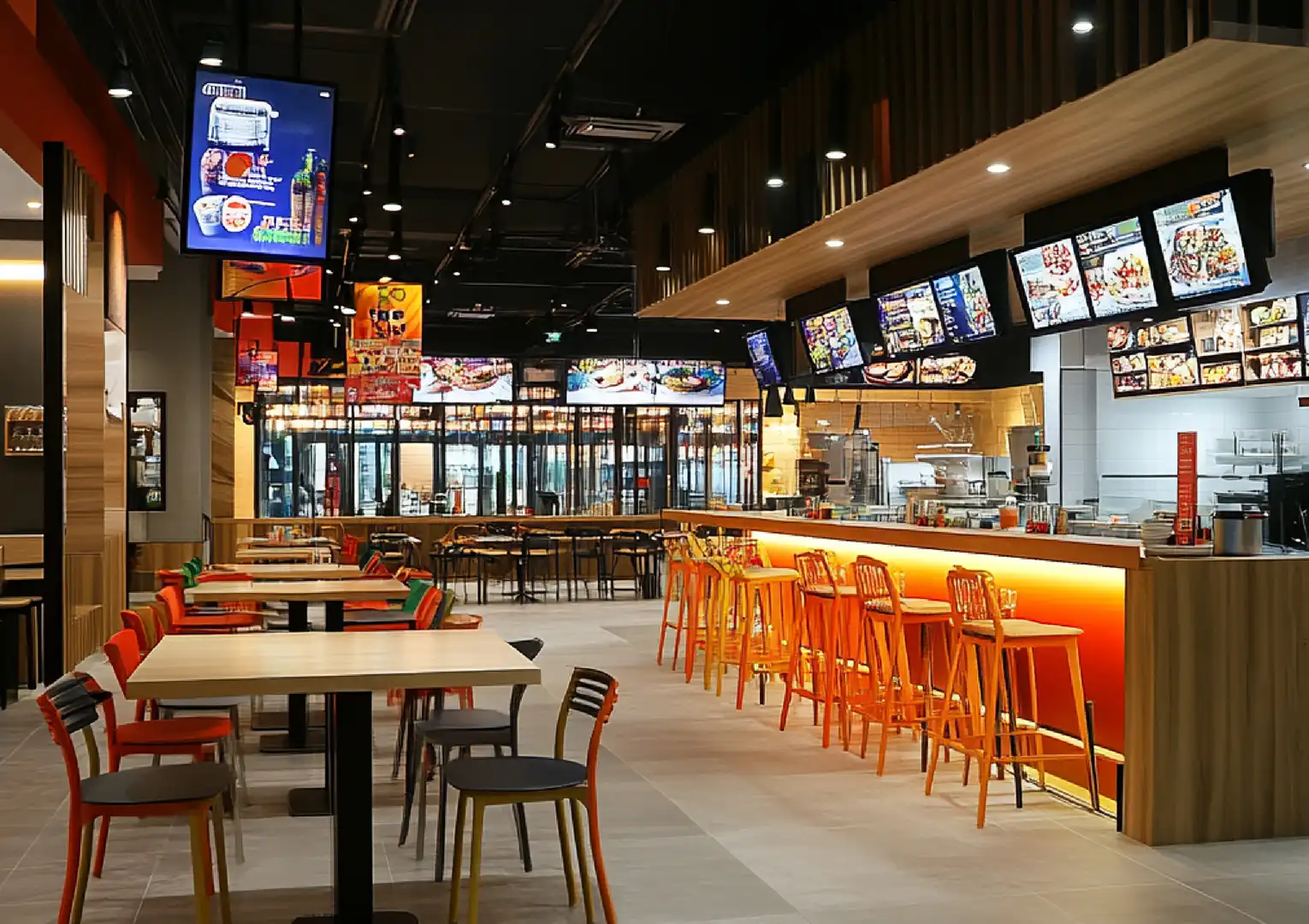What is a Food Court? Definition and How It Differs from a Restaurant
April 8, 2025
Share This Article

Food court” is a common term used in the culinary world. Many people often assume that a food court is the same as a restaurant. However, the two are clearly different. This article will explore what a food court is and how it differs from a restaurant. Let’s dive in and find out more!
What Is a Food Court
When it comes to dining, you’re probably quite familiar with the term food court. However, not everyone knows exactly what it means. Simply put, a food court is a dining area that features a variety of food and beverage vendors all in one location.
In Indonesia, food courts are often called pujasera, short for pusat jajanan serba ada, which translates to "a center for all kinds of snacks." You’ll typically find food courts in shopping malls, airports, train stations, university campuses, and other public spaces.
A food court offers a wide range of culinary choices in one convenient spot — from fast food to traditional dishes. This makes it easy for visitors to pick what they like without having to move from one place to another.
Additionally, the casual atmosphere and affordable prices make food courts a popular choice for people to eat and relax.
Types of Food Courts
Food courts come in a variety of concepts tailored to meet the needs of different visitors. Each concept offers a unique dining experience, ranging from quick service to a more relaxed atmosphere. Here are some common types of food courts you may encounter:
1. Fast Food Court
In this concept, visitors place their orders directly at each vendor. Meals are prepared quickly, usually within 15 minutes. After that, you can either pick up your order yourself or wait at your table for it to be delivered. This concept is ideal for high-traffic areas such as office buildings or university campuses.
2. Food Court with Table Service
In this type of food court, visitors are seated at a table, and a server comes to take their order. The food is then brought directly to the table. This concept offers a more relaxed dining experience and is typically found in large shopping malls.
3. Urban Food Court
An evolution of the traditional food court, the urban food court offers a modern twist. In addition to being a dining area, it often serves as a social hangout spot, featuring stylish interior designs, added facilities like kids’ play areas, and trendy, up-to-date food selections.
Also Read: 9 Creative and Unique Food Stall Name Ideas That Spark Curiosity
The Difference Between a Food Court and a Restaurant
Although both are dining establishments, food courts and restaurants have different concepts. These differences can be seen in how orders are placed, the overall atmosphere, and the variety of menu options offered. Here are some of the key differences between a food court and a restaurant:
1. Seating Arrangement
Restaurants have exclusive seating areas reserved for their own customers. In contrast, food courts feature shared seating areas used by visitors from various vendors. The seating configuration in a food court is also more flexible and can be adjusted to suit different needs.
2. Food Variety
Restaurants usually focus on a specific type of cuisine or theme, such as Italian or Japanese food. On the other hand, food courts offer a wide range of dishes from multiple vendors, allowing visitors to choose according to their personal tastes.
3. Location and Atmosphere
Restaurants can be found in various locations, from city centers to suburban areas, and typically offer a quieter, more formal atmosphere. In contrast, food courts are usually located in high-traffic places such as malls or stations, with a livelier and more casual environment.
Advantages of a Food Court
Food courts are a favorite dining option for many people because they offer a range of conveniences. From affordable prices and diverse menus to a relaxed atmosphere, everything is designed for the comfort of visitors. Here are some of the main advantages that make food courts so popular:
Wide Variety of Menu Options
At a food court, you can find a wide range of food and beverages from different vendors all in one place. This makes it easy to choose meals that suit your tastes without having to move from one location to another.
Affordable Prices
Compared to restaurants, food at food courts tends to be more budget-friendly. You can easily find meals that fit your budget without sacrificing variety or flavor.
Casual Atmosphere
Food courts offer a more relaxed and informal environment than restaurants. This makes them ideal for dining with friends or family without the need for a formal setting.
Complete Facilities
Many modern food courts are equipped with additional amenities such as free Wi-Fi, children’s play areas, and even live music. These features make the dining experience more comfortable and enjoyable for visitors.
That was a look at what a food court is and how it differs from a restaurant. Compared to restaurants, food courts are often the go-to choice for those looking to start a business in the culinary industry. This is because the initial investment is generally lower—food courts typically offer more affordable rental spaces than standalone restaurants.
However, to run a business more efficiently, using a reliable point-of-sale (POS) system is essential. One of the best POS app options today is Labamu—an application specifically designed to help small and medium-sized businesses manage their transactions more effectively.
With Labamu, you can take advantage of a variety of useful features, from POS systems to inventory management. So, what are you waiting for? Give Labamu a try today!






